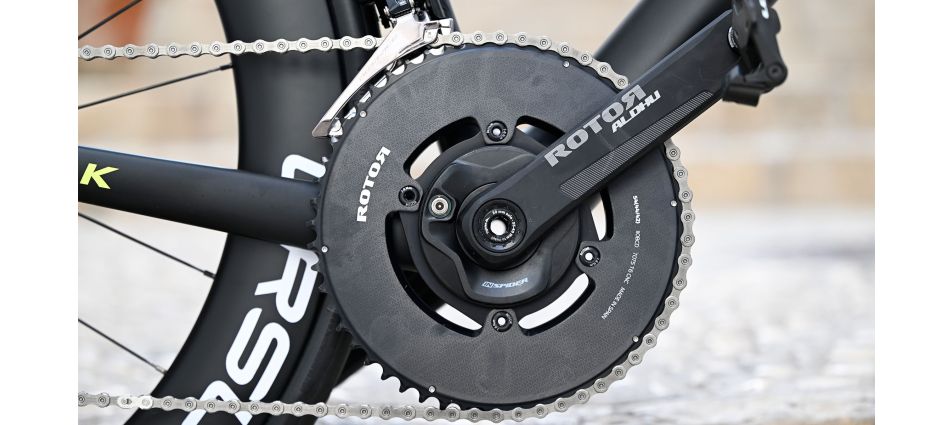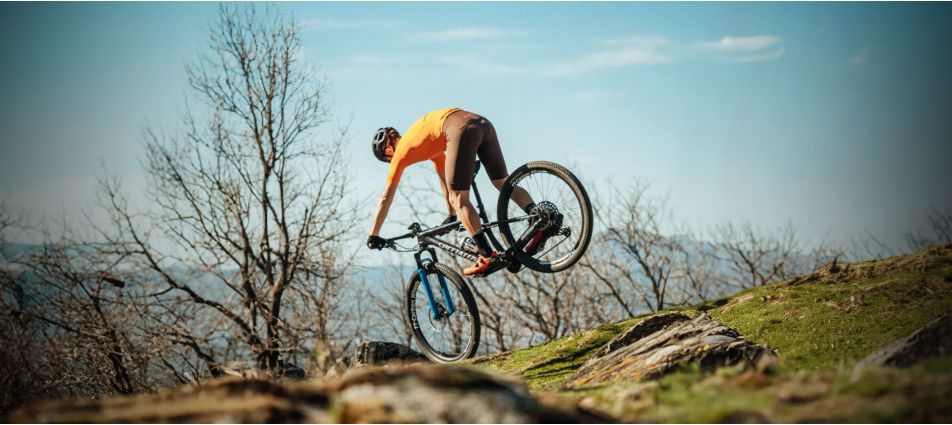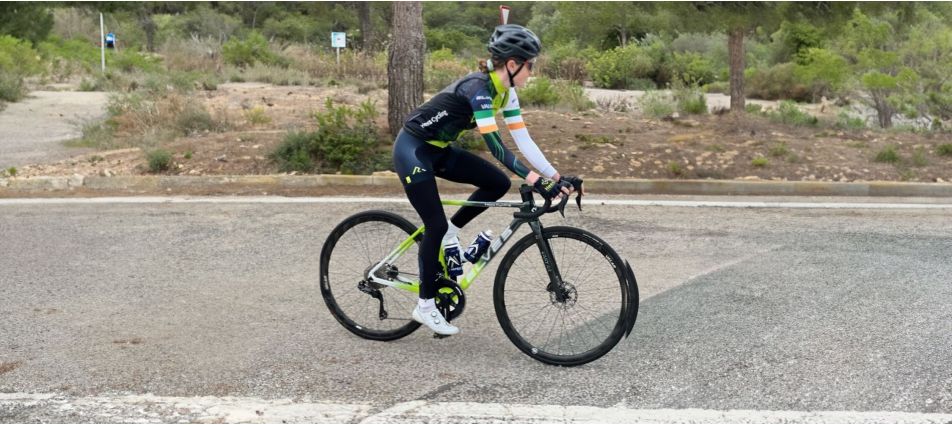Road Bike Crank Stiffness Test
Imagine pedalling as hard as possible, trying to climb a super-steep hill, but your bike seems to absorb some of your precious energy. That's where road bike crank stiffness comes into play. The stiffness of a crankset directly affects power transfer, which means how efficiently your pedalling power gets translated into forward motion.
A high-quality crank should feel rock-solid and responsive under load, transmitting your pedalling force to the drivetrain with minimal loss. We all want our pedal strokes to count, giving us maximum efficiency. That's why testing the stiffness of road bike cranks is crucial to ensure you get the most out of the effort you put into your pedals.


The Road Bike Crank Stiffness Test
Here are the steps engineers take during a crank stiffness test:
Step 1: Set Up A Controlled Environment
First, engineers create a controlled environment to ensure accurate and repeatable results. The road bike crank is securely mounted on a test rig, and the entire setup is calibrated to account for any external factors that might interfere with the measurements.
Step 2: Apply Force
Next, it's time to apply some force. Engineers meticulously load the road bike crank with specific forces to simulate the various loads it would experience during regular cycling. They measure the resulting deflection or bending of the crank arms as they're subjected to these forces.
Step 3: Measure The Differences
Next, engineers use a variety of instruments and sensors to measure the crank's deflection under different loads accurately. These measurements provide valuable data on how the crankset responds to the applied forces.
Step 4: Data Analysis
Once all the data is collected, the engineers plot graphs and analyse the results. They scrutinise the stiffness characteristics, looking for patterns and trends that reveal the crank's performance under various conditions.
Step 5: Look For Areas Of Improvement
The insights gained from the stiffness test play a vital role in the crank's design optimization. Engineers identify areas of improvement and make adjustments to achieve the desired stiffness and power transfer efficiency.
Step 6: Simulations and Virtual Testing
Some crank manufacturers often use sophisticated simulations and virtual testing methods to save time and resources. They create computer models of the road bike crank and run simulations to predict its stiffness and behaviour under different loads. This virtual testing complements the physical testing and enables them to fine-tune the design further.
Step 7: Real-world Verification
After all the calculations and simulations, it's time to put the road bike crank through some real-world verification. Prototype cranksets are manufactured based on the optimized design, and professional cyclists take them out for rigorous testing. Their valuable feedback helps ensure that the crank performs well in the lab and meets the demands of actual cycling scenarios.


Understanding Strain Energy and Its Impact
Strain energy is the potential energy stored in the crank arms when they're under pressure (like when you're pushing down on the pedals). A stiffer crankset deforms less under the same force than a less rigid one, leading to minimal energy loss. In other words, less flexing means less wasted effort and more of your leg power is converted into forward motion.
The right-hand crank is usually stiffer than its left-hand partner. This is because it is connected directly to the chainrings and deals with higher forces during gear changes and hard pedalling. Therefore, crank manufacturers often make the right-hand crank more beefy. As a result, it stores less strain energy compared to its slightly more flexible left-hand counter part.
How Road Bike Cranks Should Feel?
A well-designed crank should feel responsive and solid. The ideal road bike crank should efficiently transfer your pedalling power to the drivetrain.
Strain energy plays a huge part in how your cranks feel. A crank with lower strain energy keeps your pedal strokes smooth. It ensures you're not wasting your precious energy on unnecessary flexing.
Crank Material Affects Strain Energy
There are two primary materials in the ring: carbon and metallic alloys. Metallic cranks, made from aluminum or steel, have been used for many years. They're durable, reliable, and don't cost as much as more exotic materials. They offer excellent stiffness for power transfer, but they don't absorb and dissipate energy as well as carbon cranks do.
Carbon cranks are made from advanced composite materials, increasing stiffness, and reducing weight. They're stiff enough to ensure efficient power transfer, but they also dampen vibrations and absorb more strain energy. It's like having a shock absorber for your pedal strokes!
An example of this is the ALDHU Carbon road cranks from ROTOR. This cranks are used by the best athletes worldwide like Alejandro Martínez Chorro (Olympic Athlete) or by the UCI International Team Intermarché-Circus-Wanty in combination with the ROTOR INspider power meter and ROTOR Round Rings BCD110x4 12-11s.
Go to related products: INspider ALDHU Carbon Shimano 2x12 Crankset


Crank Length Variations
Crank length can make a world of difference in your cycling experience. Long cranks offer more leverage during your pedal stroke. Taller riders or those with long legs might enjoy the extra power from these longer levers.
But shorter cranks reduce the range of motion required during each pedal revolution, saving your knees and hips from unnecessary strain. Shorter cranks can lead to smoother pedalling and a more fluid cadence.
Finding the perfect crank length that suits your style and body mechanics is essential for optimal power transfer and comfort. Why not check out the options in the ROTOR Bike Online Store for ones that incorporate power meters?
Happy riding #ROTORians!




